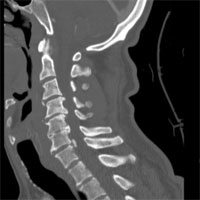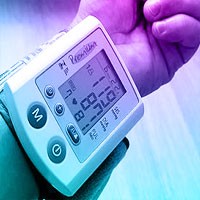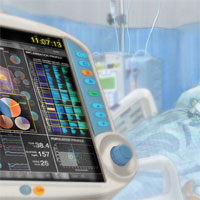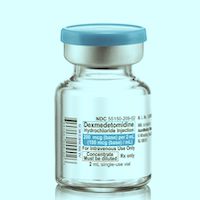Tag: ICU

Electronic Hand Hygiene System Fails to Improve Staff Satisfaction in ICU
A study published in Antimicrobial Resistance & Infection Control examined the effect of introducing an electronic hand hygiene surveillance and intervention system into an ICU. Researchers introduced the system into a general... read more

Potassium Homoeostasis and Pathophysiology of Hyperkalaemia
Since determination of potassium levels may be afflicted with various errors, potassium levels should be determined using a standardized set-up ensuring high accuracy and precision of measurements. Potassium levels may be... read more

Appropriate Treatment for Bloodstream Infections Due to Carbapenem-Resistant Klebsiella Pneumoniae and Escherichia Coli
Tigecycline monotherapy was a choice if the strains exhibited MIC ≤0.5 mg/L, and colistin monotherapy was not suitable. Our findings can initiate additional clinical studies regarding the efficacy of tigecycline in carbapenem-resistant... read more

Annals of B-Pod: Neurogenic Shock
Shock is defined as the failure of circulation to provide adequate oxygenation to meet cellular demand. To better identify and manage this compromised physiologic state, shock is subcategorized into four... read more

Effect of Occupancy on Critically Ill Admissions
Effect of Emergency Department and ICU Occupancy on Admission Decisions and Outcomes for Critically Ill Patients. The volume of ICU admissions from the ED has increased around 50% from 2001-2009. Hospitals struggle with this... read more

Can Noninvasive BP Monitoring Replace Arterial Catheter?
Although its reliability is often questioned, noninvasive blood pressure (NIBP) monitoring with an oscillometric arm cuff is widely used. Indeed, intermittent arm NIBP is the first-line monitoring technique during prehospital... read more

ICU Admissions Raise Chronic Condition Risk
A new study of ICU patients in the Netherlands shows a heightened risk of developing new chronic conditions in patients after an intensive care stay. The research showed rising likelihood of conditions such as depression,... read more

Mythbuster: Administration of Vasopressors Through Peripheral Intravenous Access
Vasopressors are frequently used in critically ill patients with hemodynamic instability both in the emergency department (ED) as well as intensive care units (ICUs). Typically, vasopressors are given through central venous... read more

Caring for Critically Ill Patients in Humanitarian Settings
Critical care medicine is far from the first medical field to come to mind when humanitarian action is mentioned, yet both critical care and humanitarian action share a fundamental purpose to save the lives and ease the suffering... read more

Clinics Aim to Improve Post-ICU Recovery
Ten days after arriving in the emergency department with pneumonia, 58-year-old Connie Bovier woke up in the intensive care unit (ICU). She survived acute respiratory distress syndrome (ARDS), sepsis, and a host of other... read more

Long-Term Mortality and Hospital Resource Use in ICU Patients With Alcohol-Related Liver Disease
ICU patients with alcohol-related liver disease have higher 5-year mortality and emergency readmission rates than ICU patients with other severe comorbidities and matched general ICU patients. These data can contribute to... read more

Antibiotic Treatment of Hospital-acquired Pneumonia
Although more prospective therapy trials of Hospital-acquired Pneumonia (HAP) are needed, based on currently available data, it is possible to use an approach that provides appropriate therapy without the overuse of broad-spectrum... read more

Effect of Intravenous Acetaminophen vs Placebo Combined With Propofol or Dexmedetomidine on Postoperative Delirium Among Older Patients Following Cardiac Surgery
Among older patients undergoing cardiac surgery, postoperative scheduled IV acetaminophen, combined with IV propofol or dexmedetomidine, reduced in-hospital delirium vs placebo. Additional research, including comparison of... read more

Bag-Mask Ventilation during Tracheal Intubation of Critically Ill Adults
Among critically ill adults undergoing tracheal intubation, patients receiving bag-mask ventilation had higher oxygen saturations and a lower incidence of severe hypoxemia than those receiving no ventilation. Among the 401... read more








